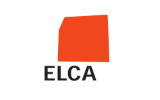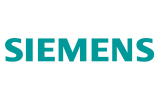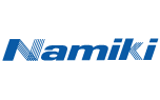Unparalleled exposure to new technologies
Located in Lausanne, on the campus of one of Europe's most cosmopolitan technical university; the innovative and productive scientific institution EPFL with its 11'000 persons and 400 laboratories.
EPFL Innovation Park is housing start-ups, SMEs, research teams and innovation cells from major companies in the fields of information technology, computing, health and nutrition, engineering, transport, telecommunications or materials.
In a spirit of scientific collaboration, the EPFL Innovation Park offers unparalleled exposure to the wide range of new technologies being developed in the research units of the EPFL, UNIL and the CHUV.

Computer and Computational Science
Cloud computing
Focusing on maximizing the effectiveness of the shared computer resources. It means multiple users, dynamically reallocated per demand, while keeping the access simple and secure.
Smart data
The collection and exploitation of valuable data from cellphones, tablets, smart objects, social networks, web services etc., used effectively to optimise and automate solutions and solve business problems.
Cybersecurity
Network outages, data compromised by hackers, computer viruses… Cyber security focuses on protecting computers, networks, programs and data from unintended or unauthorized access, change or destruction.
Social media
Research and developments in the fields of big data, social media semantic analysis, machine learning and predictive analytics. Valorising the quality of the research work and creating a clear added value for entreprise partners.
Digital sciences
Innovating applications, designing the architecture of computers and server farms, solving problems using algorithmic models, storing, transforming and using information. The study of digital science allows us to better understand our reality.
Projects
Rooting out rumors, epidemics, and crime – with math
Rooting out rumors, epidemics, and crime – with math
Read MoreA program that captions your photos
A program that captions your photos
Read MoreResearchers have developed a simpler and better working technology for captioning pictures automatically.
Texting Made Possible for the Illiterate
Texting Made Possible for the Illiterate
Read moreAn application that allows people incapable of reading and writing to use text messages.
Energy, Natural Resources and Environment
Hydrodynamics of turbines
With hydrodynamic screw turbines, even small flowing waters serve as a renewable source of energy. The ocean offers immense potential for clean energy extraction and tidal stream turbines could play a significant role in the future energy supply chain.
Green chemistry
Green chemistry is the design of chemical products and processes that reduce or eliminate the generation of hazardous substances leading to significant environmental benefits, innovation and a strengthened economy.
Essential technologies
Some technologies have the potential to improve millions of human lives in the world’s poorest regions in a sustainable manner. They can help meet people’s most fundamental needs and may open new markets.
Extreme environments
Conditions hard to survive for most known life forms. Extremely high or low temperature or pressure; high or low content of oxygen or carbon dioxide in the atmosphere; high levels of radiation, acidity, or alkalinity; absence of water; water containing a high concentration of salt or sugar; presence of sulphur, petroleum, and other toxic substances.
Smart grid
Smart Grids are electric systems that satisfy both, the increasing demand for power and the need to reduce carbon dioxide emissions. An electric system that can handle these challenges in a sustainable, reliable and economic way.
Space
Activities in the space covering fairings, structures, ground support equipments, electronics, sensors, tiny but extremely reliable mechanisms, atomic clocks, and others.
Materials
Understanding and engineering the relations that exist between the microstructure, the synthesis and processing, the properties, and the performance of all materials, i.e. of what we make all engineered structures from.
Energy storage
Developing reliable energy storage systems like electrochemical storage, fuel cells and metal hydrides is critical to the the integration of renewable energy sources and to the controlled use of renewable energy.
Projects
Solar Panels That Protect Themselves in High Temperatures
Solar Panels That Protect Themselves in High Temperatures
Read moreA new smart material that enables the efficient absorption of solar energy while reducing the impact of overheating.
Autonomous shuttles in the center of Sion
Autonomous shuttles in the center of Sion
Read moreEPFL and BestMile launch a project for a fleet-management system with ‘smart’ vehicles circulating in the town center of Sion.
All-terrain robot for nuclear decommissioning
All-terrain robot for nuclear decommissioning
Read moreThe heavyweight version of this unique robot will be equipped with a robotic arm to dismantle nuclear plants, for example.
A new method for cheaper solar-energy storage
A new method for cheaper solar-energy storage
Read moreCost-effective device with new method for converting and storing solar energy into hydrogen.
Future “fueling station” delivers power or hydrogen
Future “fueling station” delivers power or hydrogen
Read moreA glimpse into the fueling stations of the future. Pilot hydrogen storage and production facility developed and tested by the EPFL.
Transforming farm residues into biofuels and more
Transforming farm residues into biofuels and more
Read moreResidues from Brazilian palm oil production turned into furfural and lignin. A much-used industrial compound and a solid fuel.
Health and Life Sciences
Sport
The application of scientific principles to exercise and sport. With the increasing pressure on achieving better results, sport scientists and performance knowledge regarding the human body or materials employed in sport are growing in demand.
Nutritional health
Nutritional science investigates the metabolic and physiological responses of the body to food and diet, including the role of nutrients in the cause, treatment, and prevention of disease.
Neurosciences
Aiming at engineering the nervous system to improve sensation, cognition, and mobility. Neurosciences strives to create solutions for new markets using bioengineering and neuro-prosthetics to improve human lives. Leading cutting edge research in different neuroscience areas is only possible by studying, in particular, the standard or pathological behaviours of the brain, both in human beings (adults or children) and animals.
Essential technologies
Some technologies have the potential to improve millions of human lives in the world’s poorest regions in a sustainable manner. They can help meet people’s most fundamental needs and may open new markets.
Extreme environments
Conditions hard to survive for most known life forms. Extremely high or low temperature or pressure; high or low content of oxygen or carbon dioxide in the atmosphere; high levels of radiation, acidity, or alkalinity; absence of water; water containing a high concentration of salt or sugar; presence of sulphur, petroleum, and other toxic substances.
Materials
Understanding and engineering the relations that exist between the microstructure, the synthesis and processing, the properties, and the performance of all materials, i.e. of what we make all engineered structures from.
Robotics
Robotics comprises mechanical engineering, electrical engineering and computer science for the production of robots and computer systems for their control, sensory feedback, and information processin
Oncology
Innovative technologies to better diagnose and treat cancer using state-of-the-art knowledge and platforms to discover biomarkers and develop efficient small molecules, antibodies and cell therapies.
Bioinformatics
The science of bioinformatics is about applying information technology to biological problems. It provides databases, algorithmic and software tools that help in searching, analyzing, modeling and understanding of biological data.
Projects
A new way to treat colon cancer
A new way to treat colon cancer
Read moreVitamin A can treat resistant colon cancer, preventing cancerous stem cells of the colon from growing uncontrollably and spreading.
New DNA stain lights up living cells
New DNA stain lights up living cells
Read moreBy combining two molecules, scientists have developed a DNA stain that that can be used to safely image living cells.
All-terrain robot for nuclear decommissioning
All-terrain robot for nuclear decommissioning
Read moreThe heavyweight version of this unique robot will be equipped with a robotic arm to dismantle nuclear plants, for example.
3D-mapping a new drug-delivery tool
3D-mapping a new drug-delivery tool
Read moreScientists were able to study the 3D structure of cubosomes in detail for the first time for possible future use in medicine and food science.
When the neuroprosthetics learn from the patient
When the neuroprosthetics learn from the patient
Brain-machine interfaces to teach neuroprosthetics the proper movements based on "ERP – error-related potential".
Autonomous shuttles in the center of Sion
Autonomous shuttles in the center of Sion
Read moreEPFL and BestMile launch a project for a fleet-management system with ‘smart’ vehicles circulating in the town center of Sion.
Human Brain Project
Human Brain Project
Read moreUnderstanding and mimic the way the brain works, to revolutionize information technology, medicine and society.
A cyber skin that feels
A cyber skin that feels
Read moreAn artificial electronic skin connected to the nervous system. Stretchable electronics as prosthetic skin for burn victims.
Materials and Manufacturing
Microtechnology
On the strength of its dynamic research facilities, Swiss microtechnology has demonstrated its expertise in all areas of industry (watchmaking, medtech, electronics, cars, spatial, telecommunications, biotechnology, chemicals, etc). Microtechnology is deeply rooted in Neuchâtel’s industrial history which has developed continuously through innovation for the benefit of mankind.
Robotics
Robotics comprises mechanical engineering, electrical engineering and computer science for the production of robots and computer systems for their control, sensory feedback, and information processin
Materials
Understanding and engineering the relations that exist between the microstructure, the synthesis and processing, the properties, and the performance of all materials, i.e. of what we make all engineered structures from.
Projects
EPFL students revolutionize medical sterilization
EPFL students revolutionize medical sterilization
Read moreA cheap mobile sterilization kit for medical tools to prevent infections resulting from bad hygienic conditions.
A Decade of Collaboration for EPFL and Solar Impulse
A Decade of Collaboration for EPFL and Solar Impulse
Read moreFirst aircraft only powered by photovoltaic cells to circumnavigate the globe.
Breath test for detecting head and neck cancer
Breath test for detecting head and neck cancer
Read morePortable device detects the presence of certain types of cancer in people’s breath. Innovative tool for the early diagnosis of tumors.
Mobility and Transportation
Essential technologies
Some technologies have the potential to improve millions of human lives in the world’s poorest regions in a sustainable manner. They can help meet people’s most fundamental needs and may open new markets.
Energy storage
Developing reliable energy storage systems like electrochemical storage, fuel cells and metal hydrides is critical to the the integration of renewable energy sources and to the controlled use of renewable energy.
Projects
A new method for cheaper solar-energy storage
A new method for cheaper solar-energy storage
Read moreCost-effective device with new method for converting and storing solar energy into hydrogen.
Autonomous shuttles in the center of Sion
Autonomous shuttles in the center of Sion
Read moreEPFL and BestMile launch a project for a fleet-management system with ‘smart’ vehicles circulating in the town center of Sion.
All-terrain robot for nuclear decommissioning
All-terrain robot for nuclear decommissioning
Read moreThe heavyweight version of this unique robot will be equipped with a robotic arm to dismantle nuclear plants, for example.
Partners

Université de Neuchâtel
Situated in an idyllic setting between lake and mountains, the University of Neuchâtel counts 4500 students, of which about 20% are of foreign nationalities, and 740 staff members for the faculties of Humanities, Science, Law, Economics and Business, Theology.

Centre Hospitalier Universitaire Vaudois (CHUV)
The University Hospital of Lausanne (CHUV) is one of the 5 Swiss university hospitals. Through its collaboration with the Faculty of Biology and Medicine of the University of Lausanne, the CHUV plays an important role in european advances for medical care, medical research and training. The CHUV employs 10’000 collaborators of 113 nationalities.

HES-SO
The largest University of Applied Science in Switzerland comprises 28 schools of higher education with 19’400 students and six faculties for Design and Fine Arts, Business Management and Services, Engineering and Architecture, Music and Performing Arts, Health and Social Work.















